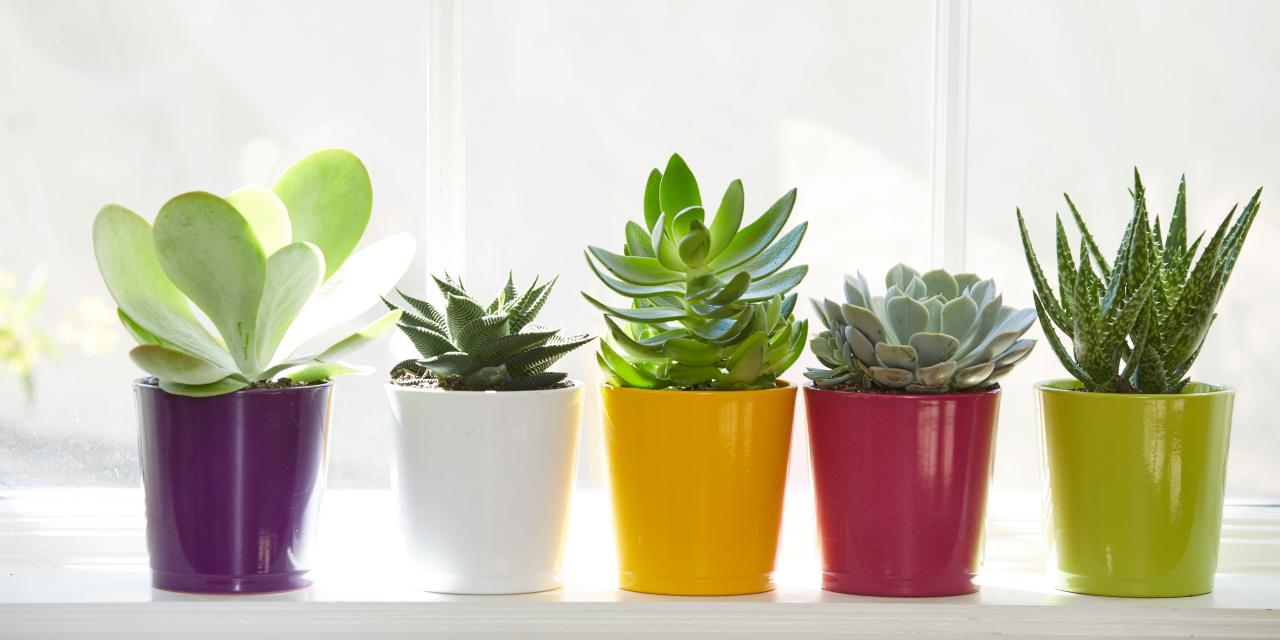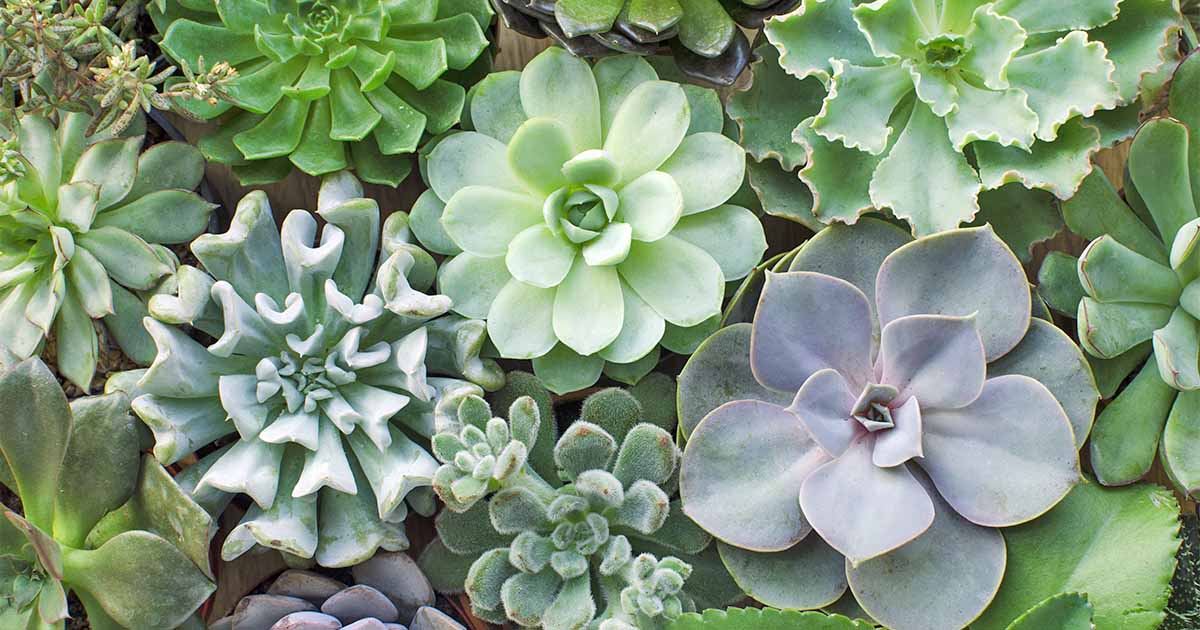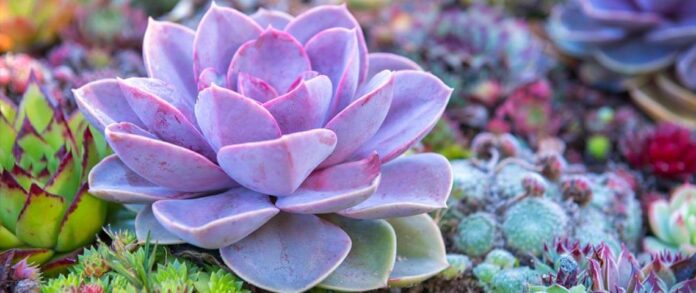If you want to start gardening but don’t know where to begin, starting with succulents can be a good first step. Not only are these plants trending, are aesthetically pleasing and easy to manage for beginners but it’s also healthy as it cleans the air. For that reason, we highly recommend that you try out planting succulents before other plants that are harder to manage.
What are Succulents?

Succulents are the equivalent of cactus as it retains the characteristics of a cactus plant. It can be described as fleshy, thickened leaves and/or stems that store water. The word “succulent” comes from the Latin word sucus, meaning juice or sap. With these properties in tow, succulents are able to live even with limited water resources and can withstand drought.
Benefits of Succulents
- They can live in dry, indoor conditions
As been said, succulents can withstand low humidity environments. It can be said that it will not suffer the unpleasant side effects of dry air. For those who want to keep plants but only have indoor space, this aspect is especially important for the air tends to be dryer.
2. They help purify the air
The characteristics of being easy to manage and healthy enough to purify the air makes it an ideal plant to keep for astronauts at NASA. The research Plants Clean Air and Water for Indoor Environments has detailed how NASA’s research uses plants in a BioHome. Succulents have been described to remove many volatile organic compounds (VOCs) from the air, due to a pumping action that pulls contaminated air down to the roots of the plant while emitting water vapor. The succulent converts these contaminants to plant food, thereby purifying the air in your home.
3. They improve the humidity of your home
Humidity improves with the presence of succulents in your home. This is because plants release water, increasing moisture and in turn improve common health complaints including:
Sore throat
Common colds
Dry cough
Dry, itchy skin
4. Produces fresh oxygen
It is said that putting plants inside our home at night is dangerous for it releases carbon dioxide. On the other hand, succulents continuously produce oxygen for the environment around it. Having succulents at home will therefore help freshen the air in your house and enhances your breathing process.
Tip: Place succulents in areas of the house that need extra fresh air, such as bathrooms or kitchens.
5. Aesthetic aspect
What makes succulents so popular were because of its health benefits as well as its aesthetic aspect. In addition to being healthy and enriching the health of those around it, its stark, unique, and robust leaves and stems, along with their arresting foliage or trailing greenery, gives them the impression of living works of art. No wonder succulents have become a trend!
Tips to Get Started

- Lighting
Depending on the type of succulents, it will need different amounts of sunlight per day although the average is six hours per day. Succulents that are newly planted can scorch in direct sunlight, so you would need to gradually expose it to full sunlight exposure. Otherwise, you can provide shade with a sheer curtain. Our tip is to place these plants near a south or east-facing window. Signs that the succulents are not getting enough sunlight is shown if your succulents becoming spindly or stretching toward the light.
2. Rotate Succulents for Sunshine
Since sunlight is essential to succulents, it’s best to place your succulents in broad daylight. But if yours is sitting in the same exact spot day after day, it’s likely that only one side is getting enough light. The trick is to rotate the plant often. Succulents will lean towards the sun, so rotating them will help them stand up straight. Leaning succulents may also be a sign that they need to be in a sunnier spot.
3. How to water the Soil
When you water your succulents, soak the soil until water runs out of the drainage holes. If your container doesn’t have drainage holes, use less water. We don’t recommend spray bottles in watering succulents as misting can cause brittle roots and moldy leaves. Alternatively, you can place pots in a pan of water and allow the water to absorb through the drainage hole. Once the top of the soil is moist, remove from the pan.
4. Clean your succulents
Keeping succulents clean is also part of taking care of it. Since it is an indoor plant, succulents will eventually pick up dust on their surface, which can inhibit its growth. For that reason, you will need to manually wipe off the leaves and spines gently with a damp cloth, while also using a soft paintbrush to get at hard-to-reach spots).
5. Choose the right soil
When repotting, regular potting soil or dirt from your backyard won’t do as succulents need soil that drains. Choose cactus soil or mix potting soil with sand, pumice, or perlite to provide further drainage and prevent compaction. More often is that nurseries plant their succulents in soil that’s too rich and retains too much moisture, so you will need to repot your succulents as soon as you reach home. We recommend starting with a coarse potting mix for good drainage and aeration. You can find special cactus and succulent mixes at the nursery, or even use an African violet mix. Always wet the mix before using to ensure it’s evenly moist. If you want to repot your plants, then you must be gentle with it as succulent roots are very fragile.
6. Get rid of bugs
Indoor plants will rarely be inhibited by pests, but will sometimes need to deal with bugs. Gnats will inhibit succulents that are planted in soil that is too wet and doesn’t have proper drainage. To get rid of eggs and larvae, spray the soil with 70 percent isopropyl alcohol. On the other hand, mealybugs are attracted to overwatering and overfertilizing. To limit its inhibition, move infected plants away from other succulents and spray with 70 percent isopropyl alcohol.
7. Overcrowding problems
When buying these plants, there is a chance that the succulents are being overcrowded in one spot. This is not an ideal arrangement as overcrowding can encourage mold and insect infestations. Secondly, being in an overcrowded environment meant that it will probably miss out on food and water as there is too much competition. If your succulents arrive in a crowded arrangement, pluck them out carefully and give them each their own spacious mini desert dune.
8. Grow ones that are easy-to-manage
There may be some plants that look aesthetically pleasing but are challenging to manage. If you are a beginner, it’s best to stay clear of these plants. Instead, begin slow by owning easy-to-manage succulents that will not need a lot of maintenance.
Crassula is a good genus to explore if you’re working with indoor conditions, as is Sansevieria (a.k.a. snake plant). The Mammillaria cacti is another good pick if you’re looking for a prickly plant companion. But if all you have is a shaded corner in your house, go with low light-tolerant plants like mother-in-law tongue. If you plan to grow your succulent in a hanging planter, a trailing variety like string of bananas is a great choice. Always read the plant labels to determine the sunlight needs, size, and spread of your succulents.
9. Choose your container.
The container you use for your succulents matters as well. When repotting, use a container that has a drainage hole and is at least 1 to 2 inches larger than the nursery container. Don’t use glass containers such as mason jars and terrariums as it does not allow roots to breathe, causing rot over time. Fill the bottom one-third of the container with pre-moistened potting mix, then position your plant inside and backfill with more pre-moistened potting mix.
How to Choose Succulents?

Succulents can be grown with other succulents or cacti but fit well with waterwise grasses, lavender and native plants such as clumps of kangaroo paw, lomandra or dianella.
Best Succulents to Grow Indoors:
- Jade plant (Crassula ovata)
- Christmas kalanchoe (Kalanchoe blossfeldiana)
- Mother-in-law tongue or snake plant (Sansevieria trifasciata)
- Crown of thorns (Eurphorbia milii)
- Medicine plant (Aloe vera)
- Christmas cactus (Schlumbergera x buckleyi)
- Zebra cactus (Haworthia fasciata)
- Panda plant (Kalanchoe tomentosa)
- String of bananas (Senecio radicans)
- String of pearls (Senecio rowleyanus)
- Hens-and-chicks (Sempervivum tectorum or Echeveria elegans)
- Pencil cactus (Euphorbia tirucalli)
- Burro’s tail (Sedum morganianum)
- Pebble plant or living stone (Lithops)
Additional Succulent Care Tips
Can we use sand to plant succulents?
Though succulents survive in the wild with sand, it is much more preferable to use loose, rocky soil. This is because sand has a tendency to compact over time, causing too much water retention in a container. The best medium to plant succulents are those specially formulated for cacti and succulents, or a well-draining mix of potting soil, coarse sand, and perlite/pumice.
Can you plant succulents starting from its seeds?
The answer is yes! Succulent seeds can be planted indoors with light, moist soil (much like other plant seeds). Yet it grows more slowly and generally don’t reach transplant size until six months to a year after germinating.
Why are the succulent’s leaves falling off?
Like many plants, it’s perfectly normal for the lowest leaves on the stem (closest to the potting mix) to shrivel up and drop. However, if the topmost leaves are dying, it could indicate overwatering, pests, or disease.





